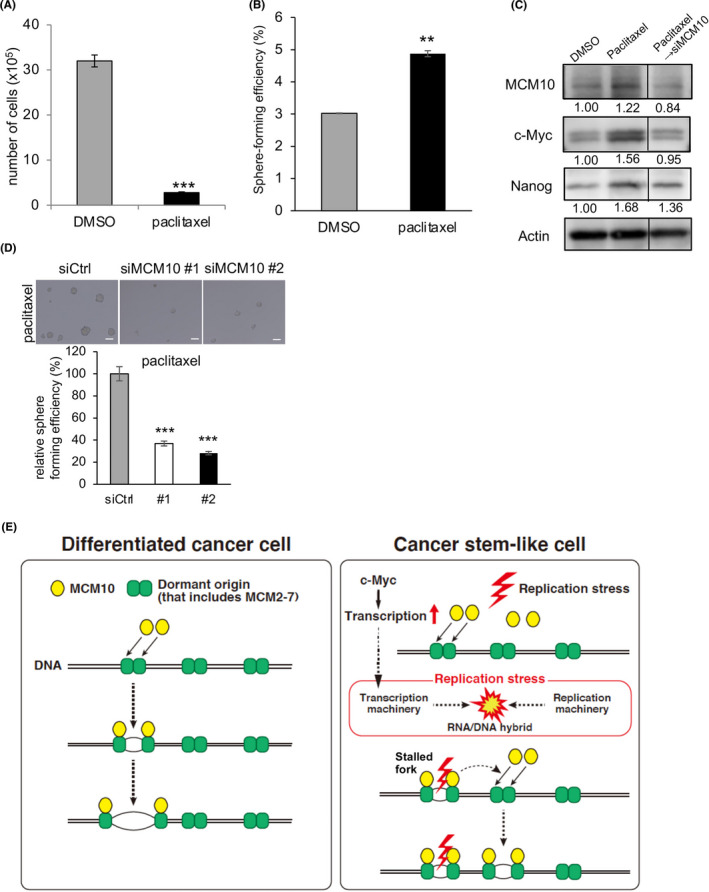FIGURE 7.

Paclitaxel‐resistant cancer cells are dependent on MCM10 for their maintenance. A, PDCs were seeded into 12‐well plates (10 000 cells/well) and cultured with 10 nmol/L paclitaxel or control DMSO for 3 d. Cells were harvested and counted (mean ± SEM, n = 3; ***P < .001). B, Cells that survived after the treatment with paclitaxel or DMSO were used to analyze sphere‐forming ability. Spheres were counted after 6 d (mean ± SEM, n = 4; **P < .01). C and D, The cells that survived after the treatment with paclitaxel or DMSO were treated with siRNA for MCM10 or control siRNA (Ctrl), and then cultured under the sphere conditions. Expression levels of Nanog, c‐Myc, and MCM10, as determined by immunoblotting, were compared (C). Expression was quantified using ImageJ software and normalized to Actin. D, Representative images of tumor spheres are shown (upper panels). Scale bars = 100 μm. Spheres were counted after 4 d (mean ± SEM, n = 4; ***P < .001, **P < .01) (lower panel). E, Models of MCM10 function in CSCs and differentiated cancer cells are illustrated. In CSCs, upregulation of c‐Myc leads to higher levels of replication stress due to collisions between transcription machinery and replication machinery. MCM10 is necessary to deal with such DNA replication stress. MCM10 promotes the completion of DNA replication by activating dormant origins near the stalled forks
